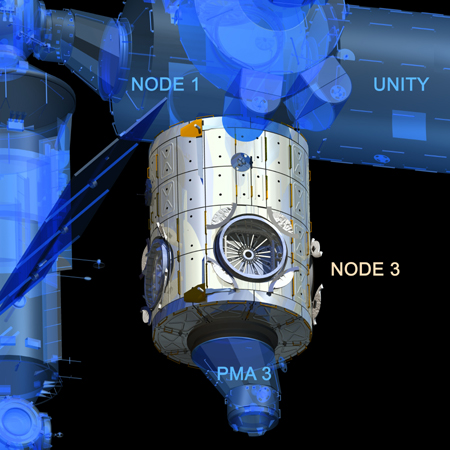A summary from Bill McDonald (WBMSAT PS – Satellite Communications Consulting Services)…
North Korea steps up threats to retaliate if Japan or Tokyo shoots down the rocket North Korea says will be used to launch a communications satellite – Obama warns the liftoff would be a "provocative act" that would generate a U.N. Security Council response.
[The Washington Post – 04/03/2009]
Rockwell Collins to acquire DataPath Inc., a Georgia company that designs, integrates, manages, and deploys satellite communications systems for military and commercial customers.
[Trading Markets – 04/03/2009]
SES AMERICOM-NEW SKIES announces that NSS-9 enters commercial operation, with all traffic transferred from NSS-5.
SatNews – 04/03/2009]
Argentinian operator Velconet S.A. initiates nationwide upgrade of ViaSat LinkStar system to DVB-S2 with Adaptive Coding and Modulation and AcceleNet compression and acceleration to increase data rates and improve bandwidth efficiency.
[SatNews – 04/03/2009]
As North Korea moves forward with launch plans, U.S. military officials say United States needs to beef up its "space situational awareness," improving data about what is going on in space, monitoring satellites and debris.
[Reuters UK – 04/02/2009]
RapidEye’s imagery partners with Moscow based Sovzond, who will be only distributor of RapidEye imagery for markets in Russia and a number of other former Soviet states.
[SatNews – 04/02/2009]
BB Sat offically launches satellite broadband service in Japan.
[Satellite Today – 04/02/2009]
GMV provides active ground systems support for European Space Agency’s GOCE mission.
[SatNews – 04/02/2009]
SES ASTRA announces German pay-TV channel Premiere has contracted 1 1/2 additional transponders.to expand HD offerings.
[SatNews – 04/02/2009]
Iridium-based critical safety communications for air carriers on transoceanic flights nearing approval as Radio-Technical Commission for Aeronautics finalizes key documents.
[SatNews – 04/02/2009]
SES AMERICOM-NEW SKIES announces five-year distribution agreement with Gulfcom to use AMC-3 transponder for program distribution in Caribbean.
[SatNews – 04/02/2009]
Infineon, Sky Terra, and TerreStar unveil multi-standard mobile platform based on Infineon’s Software-Defined-Radio technology.
[Satellite Today – 04/02/2009]
U.S. satellite makers may get a "bailout" of their own, as lawmakers revisit export controls which have hampered manufacturers since the Clinton administration and are blamed for American satellite exports having declined from 90% world market share to 50%.
[New York Times – 04/01/2009]
Globecast signs five transponder lease renewal with Eutelsat for broadcasting in Europe, North Africa, and the Middle East.
[Satellite Today – 04/01/2009]
Inmarsat to buy 19% stake in Skywave Mobile Communications of Ottowa, Canada, acquiring assests relating to the GlobalWave satellite low data rate products and services business.
[Wall Street Journal – 04/01/2009]
Alcatel-Lucent to develop satellite base station sub-systems for SkyTerra and TerraStar to support 3G satellite communications.
[EarthTimes – 04/01/2009]
North Korea threatens to shoot down U.S. spy planes sent to spy on Taepodong-2 missile launch site which it maintains will be used to launch a commercial satellite – U.S. and Japan believe it is meant as a long-range missile test and promise robust diplomatic response.
[guardian.co.uk – 04/01/2009]
U.S. space industry not yet seeing economic slowdown, as industry boosts revenues by $6b to $257b in 2008, up from $187b three years ago.
[Reuters – 03/31/2009]
SES Astra signs Croatian Broadcasting Deal with CME Group.
[Satellite Today – 03/31/2009]
SpaceX schedules Falcon 1 Flight 5 launch window for April 20.
[Satellite Today – 03/31/2009]
Global Satellite launches MCG-101, an intelligent Iridium PBX offering versatile iridium communications system for offices, remote locations, military, aircraft, oil and gas, mining, and marine applications.
[SatNews – 03/31/2009]
States not spending grant money intended to improve ability of emergency workers to talk to each other, 18 months after grants authorized.
[Kansas City Star – 03/30/2009]
Globecomm Systems Inc. launches service for GCI Village cellular network for remote villages across Alaska connected by satellite.
[Wireless Business Technology – 03/30/2009]
Stratos executes new distribution contacts with Inmarsat.
[Fox Business – 03/30/2009]
Global Supervisory, Control and Data Acquisition as well as Machine-to-Machine services, largely recession proof, depend on satellite platforms to provide reliable and ubiquitous communications in far-flung areas.
[NSR Report – May 2009}




